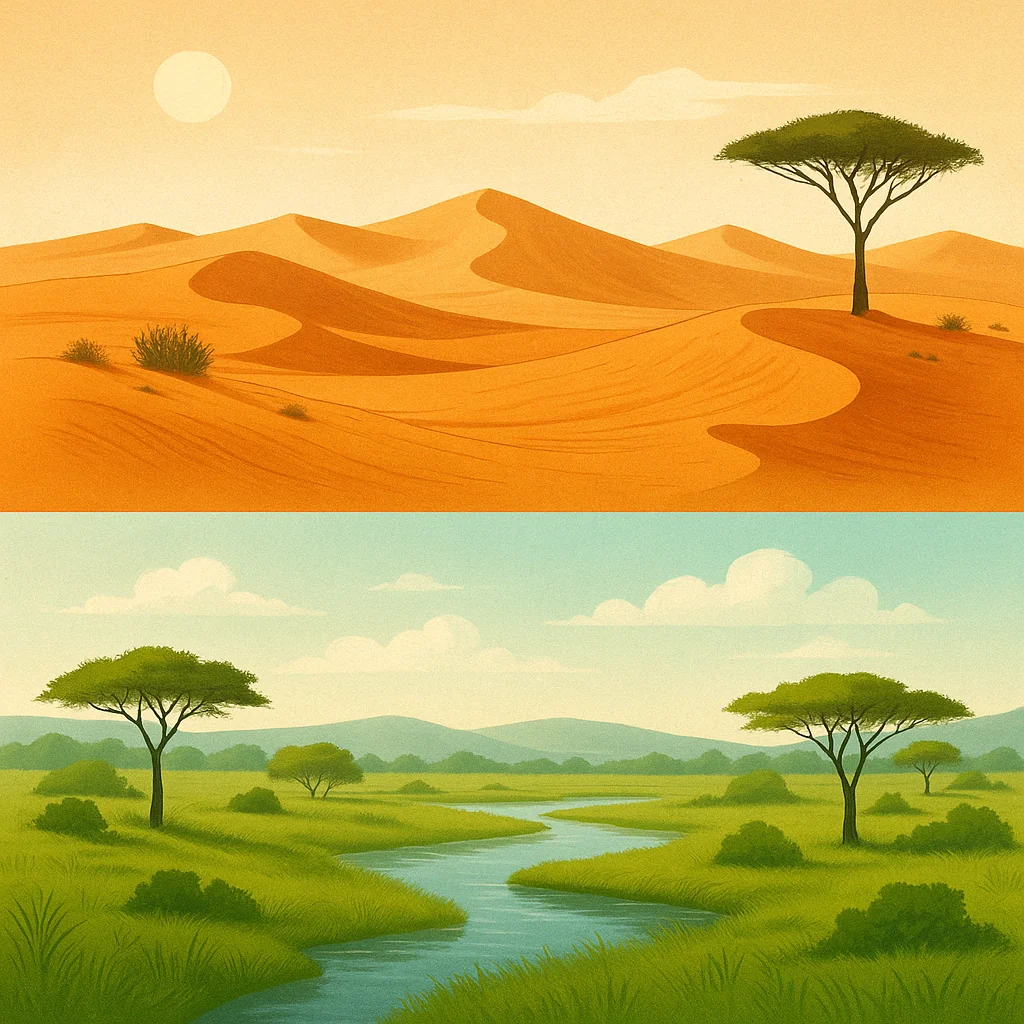The Sahara climate cycle isn’t just a theory — it’s a pattern written into the Earth itself. Roughly every 20,000 years, the world’s largest desert shifts gears, transforming from a sun-blasted wasteland into a green, living landscape. Now, new research from MIT confirms what geologists have suspected for decades: these dramatic swings are triggered not by random chance or distant ice ages, but by the slow, predictable tilt of Earth’s axis.
A desert on a timer

The Sahara climate cycle is driven by changes in Earth’s axial tilt, which affects how much summer sunlight reaches the Northern Hemisphere. Every 20,000 years or so, the tilt shifts just enough to dramatically boost seasonal sunlight over North Africa. When that happens, the region’s monsoon season strengthens, bringing rain to a landscape that today looks almost uninhabitable.
During these wet periods, the Sahara turns green. Vegetation spreads. Lakes fill. Wildlife flourishes. And crucially, it becomes a possible migration route for early humans.
But when the tilt swings back — lowering summer sunlight — monsoons weaken. The rains disappear, and the Sahara dries out again.
According to MIT professor David McGee, who led the study, “The story of North African climate is dominantly this 20,000-year beat, going back and forth between a green and dry Sahara.”
The dust that tells the story
To track the Sahara climate cycle, scientists analyzed deep-sea sediment cores collected off the coast of West Africa. Every year, millions of tons of Saharan dust are blown westward by dry northeasterly winds and settle on the ocean floor.
These layers of dust act like a natural climate logbook. Thick, dusty layers indicate dry periods. Thin, less dusty layers point to greener, wetter times.
But dust alone isn’t enough. To determine how fast that dust accumulated — and how reliable the timeline really is — the researchers turned to a rare element: thorium-232. This isotope is produced at a constant rate in seawater and quickly sticks to sinking sediment. By measuring thorium in the cores, the team could calculate the pace of sediment build-up and create an accurate chronology stretching back 240,000 years.
Rethinking old assumptions
Until now, many scientists thought the Sahara’s wet-dry cycle followed Earth’s 100,000-year ice age rhythm. But the new data didn’t match that pattern. Instead, it aligned almost perfectly with the 20,000-year tilt cycle.
“We’ve assumed that ice ages have been the key thing in making the Sahara dry versus wet,” McGee said. “Now we show that it’s primarily these cyclic changes in Earth’s orbit.”
That means the Sahara has switched between desert and grassland not once or twice, but dozens of times in just the past quarter million years.
Understanding the Sahara climate cycle could reshape how we study early human migration. During wet phases, the Sahara wasn’t a barrier — it was a corridor. Rivers and lakes made it passable, even inviting.
That opens the possibility that waves of human movement out of sub-Saharan Africa may have timed with these green periods. Researchers are now looking at archaeological sites and DNA evidence to see if there’s a link between migration pulses and Sahara greening events.
In short, when the desert disappeared, people moved — and those migrations may have helped shape entire civilizations.
The MIT team’s findings offer just a glimpse into a much larger climate puzzle. More sediment cores from other parts of the ocean — and even from within the Sahara itself — could stretch the timeline further back, or reveal new patterns entirely.
For now, one thing is clear: the Sahara has never been static. It’s not a frozen landscape in time — it’s dynamic, cycling between extremes, shaped by forces we’re only just beginning to understand. And if the Sahara climate cycle continues its natural beat, it will one day turn green again.











